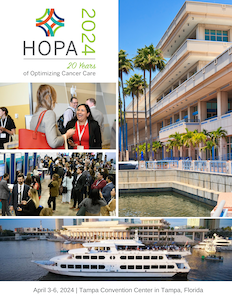Back
Trainee Research
Category: Blood & Marrow Transplantation / Cellular Therapy
(188) Post-transplant cyclophosphamide is associated with reduced aGVHD and improved clinical outcomes among allogeneic hematopoietic transplant recipients
Friday, April 5, 2024
12:00 PM – 2:00 PM ET

Grace Liu (she/her/hers)
Postdoc Research Associate
University of North Carolina at Chapel Hill
Chapel Hill, North Carolina, United States
Presenting Author(s)
Poster Abstract: Background
Acute graft-versus-host disease (aGVHD) is a common and potentially fatal sequela associated with allogeneic hematopoietic stem cell transplant (allo-HCT). Post-transplant cyclophosphamide (PTCy) is a novel therapeutic that significantly mitigates aGVHD incidence and increases relapse-free survival versus traditional prophylaxis regimens. However, previous studies enrolled fewer recipients of HLA-mismatched or haploidentical transplants, and did not include subjects who received MAC conditioning.
Objectives
This single-institution retrospective study assessed the impact of PTCy on aGVHD mitigation, and clinical outcomes improvement in a real-world cohort. The co-primary endpoints were incidence and time-to-onset of grade 2+ (Gr2+) aGVHD. Secondary endpoints included incidence and time-to-onset of grade 3-4 (Gr3-4) aGVHD and clinical outcomes (i.e., cumulative incidence of relapse [CIR], non-relapse related mortality [NRM], relapse-related mortality [RRM], and overall survival [OS]).
Method
Data from adult allo-HCT recipients who received their first transplant at the University of North Carolina Medical Center from 4/4/2014-10/13/2022 were extracted from the institutional EMR. Data included baseline clinical and demographic data, incidence, grade, and time-to-onset of aGVHD from D+14 to D+100, and clinical outcomes. aGVHD incidence was estimated using Fisher's exact test. Survival analyses for time-to-onset of aGVHD and clinical outcomes were performed using log-rank and Cox Proportional Hazards (PH) tests. Cox PH were also used to estimate hazard ratios (HR) and 95% CIs. P< 0.05 was considered statistically significant, and p-values were adjusted for covariates that independently associated with a given clinical outcome.
Results
A total of 310 subjects were included in final analyses (n=58 received PTCy; n=252 received traditional prophylaxis). Clinical and demographic characteristics were similar aside from a higher percentage of self-reported Black subjects (P < 0.0001), but a lower percentage of subjects who received MAC conditioning (P=0.02) and received an HLA-matched transplant (P < 0.0001) in the PTCy group. Multivariable models were adjusted for two covariates (HLA match status and age). PTCy was associated with a 65% reduced risk of Gr2+ aGVHD (HR=0.35, P=0.02), and with an 84% reduced risk of Gr3-4 aGVHD (HR=0.16, P=0.04). PTCy also associated with improved 2- and 5-year OS (HR=0.48, P=0.01, HR=0.46, P=0.01, respectively). While significant differences in 1-, 2- and 5-year CIR and NRM were not observed between the two groups, PTCy associated with improved 1-, 2- and 5-year RRM (HR=0.10, P=0.04, HR=0.11, P=0.009, HR=0.11, P=0.006, respectively)
Conclusion
These data suggest real-world patients who receive HLA-mismatched or haploidentical transplants, or those who receive MAC conditioning, still benefit clinically from PTCy. These data require prospective validation.
References (must also be included in final poster): References not included per HOPA website: https://www.hoparx.org/documents/169/HOPA_Abstract_Submission_Criteria_2023.pdf
Acute graft-versus-host disease (aGVHD) is a common and potentially fatal sequela associated with allogeneic hematopoietic stem cell transplant (allo-HCT). Post-transplant cyclophosphamide (PTCy) is a novel therapeutic that significantly mitigates aGVHD incidence and increases relapse-free survival versus traditional prophylaxis regimens. However, previous studies enrolled fewer recipients of HLA-mismatched or haploidentical transplants, and did not include subjects who received MAC conditioning.
Objectives
This single-institution retrospective study assessed the impact of PTCy on aGVHD mitigation, and clinical outcomes improvement in a real-world cohort. The co-primary endpoints were incidence and time-to-onset of grade 2+ (Gr2+) aGVHD. Secondary endpoints included incidence and time-to-onset of grade 3-4 (Gr3-4) aGVHD and clinical outcomes (i.e., cumulative incidence of relapse [CIR], non-relapse related mortality [NRM], relapse-related mortality [RRM], and overall survival [OS]).
Method
Data from adult allo-HCT recipients who received their first transplant at the University of North Carolina Medical Center from 4/4/2014-10/13/2022 were extracted from the institutional EMR. Data included baseline clinical and demographic data, incidence, grade, and time-to-onset of aGVHD from D+14 to D+100, and clinical outcomes. aGVHD incidence was estimated using Fisher's exact test. Survival analyses for time-to-onset of aGVHD and clinical outcomes were performed using log-rank and Cox Proportional Hazards (PH) tests. Cox PH were also used to estimate hazard ratios (HR) and 95% CIs. P< 0.05 was considered statistically significant, and p-values were adjusted for covariates that independently associated with a given clinical outcome.
Results
A total of 310 subjects were included in final analyses (n=58 received PTCy; n=252 received traditional prophylaxis). Clinical and demographic characteristics were similar aside from a higher percentage of self-reported Black subjects (P < 0.0001), but a lower percentage of subjects who received MAC conditioning (P=0.02) and received an HLA-matched transplant (P < 0.0001) in the PTCy group. Multivariable models were adjusted for two covariates (HLA match status and age). PTCy was associated with a 65% reduced risk of Gr2+ aGVHD (HR=0.35, P=0.02), and with an 84% reduced risk of Gr3-4 aGVHD (HR=0.16, P=0.04). PTCy also associated with improved 2- and 5-year OS (HR=0.48, P=0.01, HR=0.46, P=0.01, respectively). While significant differences in 1-, 2- and 5-year CIR and NRM were not observed between the two groups, PTCy associated with improved 1-, 2- and 5-year RRM (HR=0.10, P=0.04, HR=0.11, P=0.009, HR=0.11, P=0.006, respectively)
Conclusion
These data suggest real-world patients who receive HLA-mismatched or haploidentical transplants, or those who receive MAC conditioning, still benefit clinically from PTCy. These data require prospective validation.
References (must also be included in final poster): References not included per HOPA website: https://www.hoparx.org/documents/169/HOPA_Abstract_Submission_Criteria_2023.pdf

